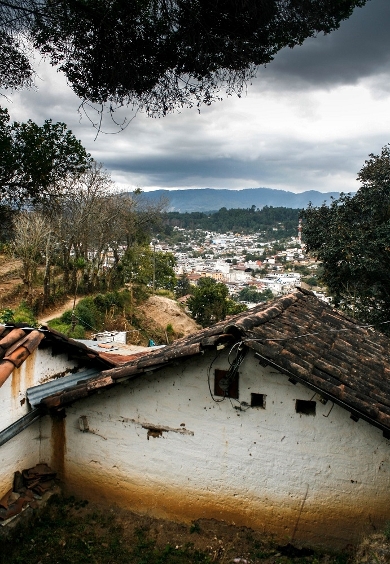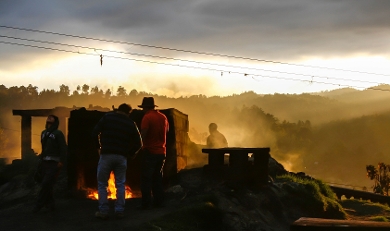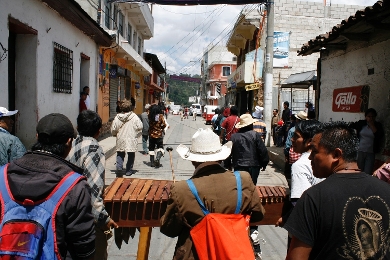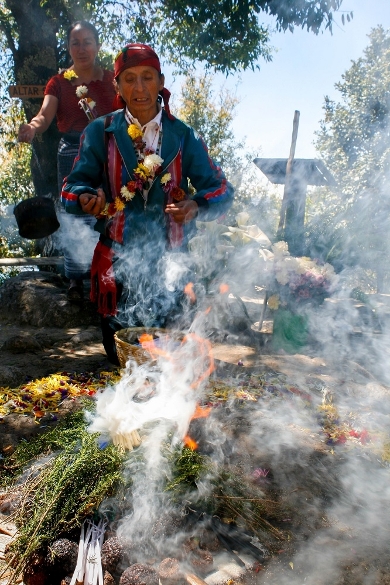Research project
Back to the Present
A post-colonial approach to the concept of time in the past and present Maya culture
- Funding
-
 European Research Council
European Research Council
- Partners
La misión maya Wajshakib’ B’atz’, organization for the promotion of Maya culture in the Maya communities of the highlands of Guatemala. Contact person: Don Rigoberto Itzep Chanchavac.
How does a better understanding of the contemporary concept of time in Maya communities contribute to the interpretation of the precolonial Maya culture?
The contemporary Maya communities in the Highlands of Guatemala have great cultural traditions which they inherited from the generations before them. This cultural continuity has not been fully recognized by archaeologists who attempt to interpret the ancient Maya culture, so this projects explores how the contemporary practices and perceptions can help to reinterpret the Maya heritage from a post-colonial point of view.
Back to the present
The boom of archaeological research in the Maya area of the last decades has led to many theories about the ancient Maya culture. Up till now, however, the Maya heritage has been mainly interpreted from a biased Western perspective while the strong cultural continuity in belief systems, practices, and knowledge of the Maya Peoples has been largely ignored in archaeological interpretations.
In the light of post-colonial research it is important to recognize the cultural continuity of the Maya culture. The aim of this research is, therefore, to come to a better understanding of the precolonial Maya culture through anthropological fieldwork in contemporary Maya communities.

Post-Colonialism
One of the objectives of this research is to break with the traditional Western interpretation of the precolonial Maya culture and to enable the Maya peoples to identify with their heritage. The Maya peoples of Central America continue to live in socially oppressed living conditions today due to internal and external colonization. Re-identification with their heritage can serve as an empowering tool in the current struggle for equality and justice.
Additionally, by documenting the contemporary knowledge and by studying the precolonial Maya culture, it is aimed to contribute to the preservation of knowledge and the revaluation of the Maya past. Re-identification and revaluation are crucial for social cohesion in times where racism, poverty, neo-colonization and migration are affecting the communities deeply.
Furthermore, the methodology of this research is based on mutual collaboration with the community members, meaningfulness (incorporate current issues that are of high concern to the community members in the dissertation), reciprocity, and reassessment of earlier published studies on the Maya culture.

Focus
Time is the central concept for structuring and organizing social life in contemporary and past Maya culture. Therefore, time is the focus of this research; how does a better understanding of the contemporary concept of time in Maya communities contribute to the interpretation of the precolonial Maya culture? This study puts emphasis on the interaction between time, the calendar system, rituals, and sacred space. How is time constructed, and what role do rituals play in this? How is sacred space created and perceived?
The town where a large part of the anthropological fieldwork takes place, Momostenango, is an important place for the study of time in the highlands of Guatemala: the presence of the Maya calendar has continued here very strongly and the calendar plays an important role in the daily activities of the town’s inhabitants. There are also indications that different periods in “natural time” are marked by special feasts, which show influences from both Maya and Catholic sides.
The approach that this research takes is relatively unconventional as, due to the strong specialization and polarization of disciplines in Maya research, archaeologists and anthropologists have not often collaborated closely and anthropological fieldwork as primary source for archaeological interpretations has often been overlooked.


Research
This research consists of several phases:
(1.) Anthropological fieldwork: The research is based on thirteen months of anthropological fieldwork in the highlands of Guatemala during which I work intensively together with Aj Q’ij’aab (calendar specialists) and other specialists in this region. Apart from the above mentioned main themes, attention will be paid to the social problems that are currently experienced in the Maya communities (e.g. mining conflicts, land rights, religious neo-colonization)
(2.) Study of the Colonial Period: This part focuses on the processes that took place in the Colonial Period which have created interesting forms of synergy. How does the interaction between the Maya and the Catholic Spaniards in the Colonial Period influence the context and form in which Maya rituals are performed today?
(3.) Interpretation of the Pre-Colonial Maya culture. How does the interpretation of archaeological sites or archaeological objects change when the knowledge of the contemporary Maya becomes the base for interpretation?
